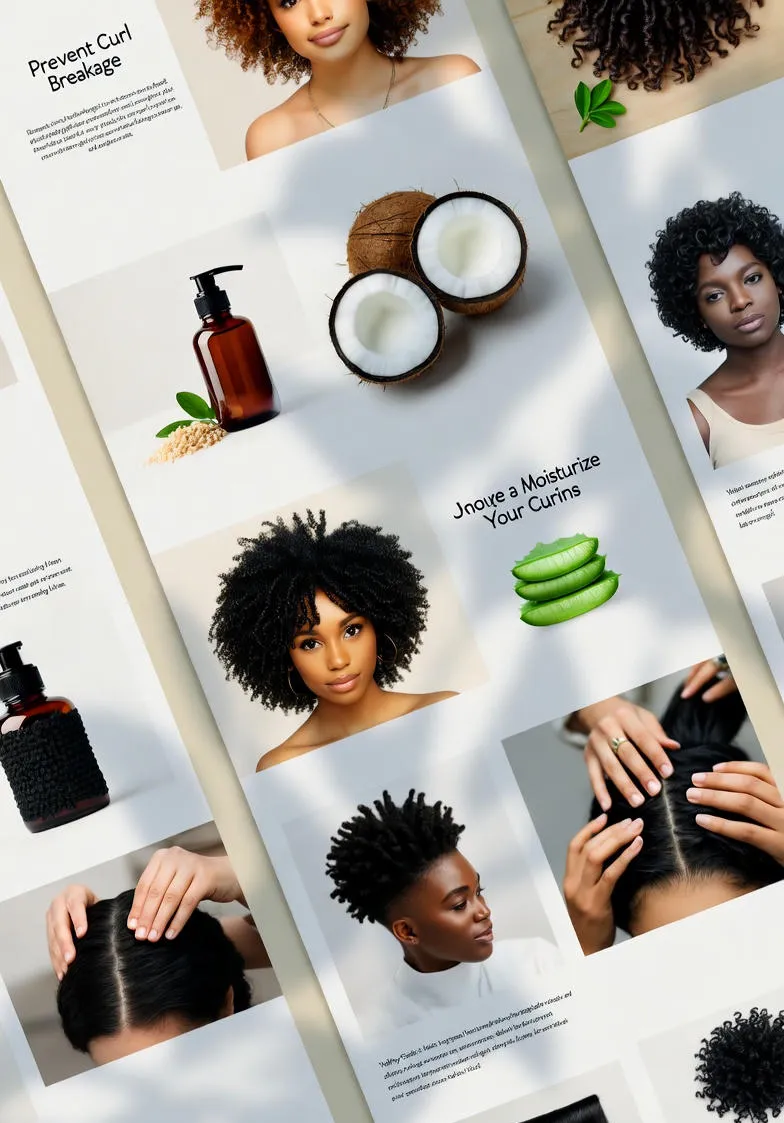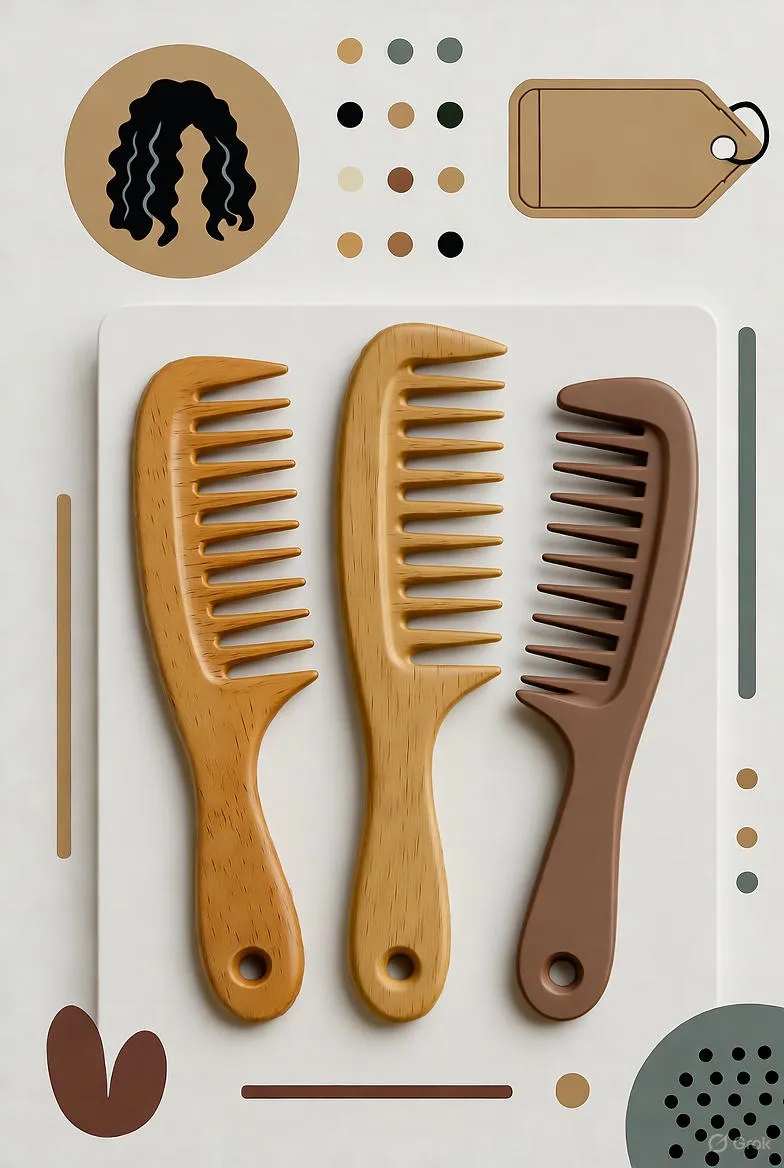Ultimate Guide: How to Prevent Curl Breakage and Maintain Luscious, Healthy Curls
Discover expert tips on preventing curl breakage for healthier, longer curls. Learn gentle routines, product picks, and natural remedies to protect your natural texture.

Understanding Curl Breakage: The Silent Saboteur of Your Natural Texture
Curly hair is a beautiful, unique feature that many people cherish, but it comes with its own set of challenges. One of the most frustrating issues curly-haired individuals face is curl breakage. This occurs when the hair shaft weakens and snaps, leading to shorter, uneven curls, frizz, and a loss of definition. Unlike straight hair, which can often hide minor damage, breakage in curls is immediately visible, disrupting the bounce and volume that make curls so enviable.
Breakage isn't just cosmetic; it can signal deeper issues with hair health. Factors like environmental stressors, improper care routines, and even genetics play a role. But the good news is that with the right knowledge and habits, you can significantly reduce breakage and nurture your curls back to vitality. This guide dives deep into the causes and, more importantly, actionable strategies to prevent it, so you can enjoy longer, stronger, and more defined curls.
Common Causes of Curl Breakage: What’s Weakening Your Strands?
Before we tackle prevention, it's essential to identify the culprits behind curl breakage. Understanding these triggers allows you to address them proactively. Here are the primary causes:
- Mechanical Stress: This is the most common offender. Brushing dry curls, tight ponytails, or rough towel-drying can tug on fragile strands, especially when hair is wet and more elastic.
- Chemical Damage: Frequent coloring, relaxing, or perming strips away the hair's natural protective layer, making it brittle. Heat styling tools like flat irons exacerbate this by further dehydrating the cuticle.
- Environmental Factors: Sun exposure, chlorine from pools, and harsh winter winds dry out curls, leading to snap-prone hair. Pollution can also build up on the scalp, weakening roots.
- Nutritional Deficiencies: A diet lacking in proteins, vitamins (like biotin and vitamin E), and omega-3 fatty acids starves hair follicles, resulting in thinner, more breakable strands.
- Over-Manipulation: Constant touching, detangling without slip, or sleeping on cotton pillowcases causes friction that frays ends over time.
Recognizing these factors is the first step. Now, let's shift to empowerment: how to shield your curls from them.
Building a Gentle Hair Care Routine: The Foundation of Breakage Prevention
A solid routine is your curls' best defense. Consistency is key—think of it as investing in your hair's future length and health. Start with the basics:
Choosing the Right Shampoo and Conditioner
Opt for sulfate-free shampoos to avoid stripping natural oils. Look for formulas enriched with moisturizers like shea butter, argan oil, or aloe vera. These ingredients hydrate without weighing down curls. For conditioning, deep condition weekly with a mask that penetrates the shaft—ingredients like honey or coconut oil are game-changers for sealing in moisture.
Pro tip: Always apply conditioner from mid-lengths to ends, avoiding the scalp to prevent buildup. Leave it on for 20-30 minutes under a shower cap to maximize absorption.
Mastering Detangling Techniques
Detangling is a notorious breakage hotspot. Never tackle dry curls with a brush; instead, use your fingers or a wide-tooth comb on wet, conditioned hair. Section your hair into four parts, apply a leave-in conditioner for slip, and gently work from ends to roots. This minimizes tension and preserves curl pattern.
Incorporate the 'prayer method' for styling: smooth products through sections while raking fingers through, then scrunch to encourage clumping and reduce manipulation.
Embracing the No-Heat Lifestyle
Heat is a curl's nemesis. If you must style, use a diffuser on low heat or air-dry with a microfiber towel or old T-shirt to blot excess water gently. Protectants like thermal sprays can mitigate damage, but limiting heat to once a month is ideal. Alternatives? Heatless curls using flexi-rods or braids overnight yield gorgeous results without the risk.
Product Power: Selecting Tools That Protect and Nourish
Not all products are created equal. Curate a lineup tailored to breakage prevention:
- Leave-In Conditioners and Oils: These are daily heroes. Argan or jojoba oil seals the cuticle, while aqueous leave-ins provide lightweight hydration. Apply a pea-sized amount to damp hair post-shower.
- Anti-Breakage Serums: Formulated with proteins like keratin or silk, these strengthen strands from within. Use on ends to target split-prone areas.
- Silky Accessories: Swap metal hair ties for scrunchies, and silk bonnets or pillowcases for sleep. They reduce friction by up to 40%, preserving moisture and elasticity.
Remember, less is more—overloading with products can lead to buildup, ironically causing more breakage. Cleanse your routine seasonally to keep things fresh.
Lifestyle Tweaks: Beyond the Bathroom for Stronger Curls
Hair health starts from the inside out. Integrate these habits for holistic protection:
Nutrition for Luscious Locks
Fuel your follicles with a balanced diet. Incorporate lean proteins (eggs, fish), nuts for zinc, and leafy greens for iron. Supplements like collagen peptides or biotin can help if your diet falls short, but consult a doctor first. Hydration is non-negotiable—aim for 8 glasses of water daily to keep strands supple.
Stress Management and Scalp Care
Stress triggers telogen effluvium, a shedding phase that mimics breakage. Practice yoga or meditation to lower cortisol. For the scalp, massage with castor oil weekly to stimulate circulation and dislodge debris. A healthy scalp anchors strong roots, preventing fallout.
Seasonal Adjustments
Tailor your care to the weather. In summer, rinse with cool water to seal cuticles; in winter, use a humidifier to combat dry air. Protective styles like loose twists can shield from elements without tension.
Home Remedies: Natural Allies in the Fight Against Breakage
Sometimes, the best solutions are in your kitchen. These DIY treatments are affordable and effective:
- Avocado Mask: Mash one ripe avocado with a tablespoon of olive oil and honey. Apply for 30 minutes, then rinse. The fats deeply nourish dry curls.
- Rice Water Rinse: Soak rice in water for 30 minutes, strain, and use as a final rinse. It's packed with inositol, which repairs damaged shafts.
- Banana and Yogurt Blend: Mix mashed banana with plain yogurt for a protein-rich mask. The silica in banana fortifies strands against snaps.
- Apple Cider Vinegar Clarifier: Dilute 1:4 with water for a weekly rinse to remove buildup without drying.
Patch-test new remedies to avoid irritation, and use them 1-2 times monthly to complement your routine.
Monitoring Progress: Signs of Improvement and When to Seek Help
Track your curls' journey with photos every two weeks. Look for less shedding in the shower, smoother ends, and retained length. If breakage persists despite changes, it could indicate underlying issues like thyroid imbalance or alopecia—visit a dermatologist or trichologist for personalized advice.
Patience is crucial; visible results take 4-6 weeks as hair grows about half an inch monthly. Celebrate small wins, like a curl-out that lasts all day.
Conclusion: Embrace Your Curls with Confidence
Preventing curl breakage isn't about perfection; it's about gentle, informed care that honors your hair's natural texture. By addressing causes head-on, adopting a nurturing routine, and making mindful lifestyle shifts, you'll unlock the full potential of your curls—vibrant, resilient, and full of life. Your hair is an extension of you; treat it with the love it deserves, and watch it thrive.
Ready to transform your curl care? Start with one tip today, and build from there. Your future self—and your fabulous mane—will thank you.


